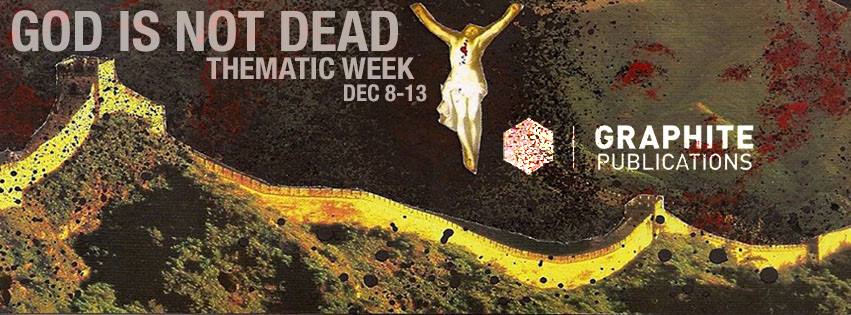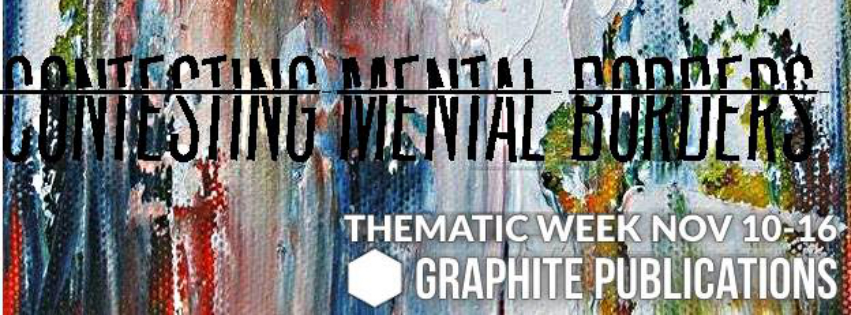It’s a dark, cold and gloomy night like most December nights in Montreal, but the Interfaith Forum is gathered in the warmth and comfort of University Hall. At a long table sit a group of interested and engaged students, delving into a discussion about spirituality, faith and its role in modern life in the centre of a big city on a university campus. It was here that I had the opportunity of guiding a discussion about the parallel roles of artistic and spiritual practices.
In many ways, the process of creating a piece of art, no matter how simple or technical, is as revelatory as a meditation session. While spirituality and religion are often rejected by the scientific, fact-seeking and personally detached style of thinking predominant among university students, art, on the other hand, seems to be more commonly practiced, lacking the ‘archaic’ connotations of organized religion. The Discussion wound through avenues of the interconnected relationship between art, religion and spirituality, exploring the ever-changing and self re-defining nature of spirituality. While the group never reached a conclusion, the open-ended nature of the discussion thrives on just that. There is no shining answer to all our questions, but perhaps this is just the point. Participating in a forum of thought-provoking discourse with people of many different religious backgrounds allowed me to understand art as the ultimate paradigm of self-expression and detached mental focus: the two paradigms of spiritual practice.
Religion and Spirituality tend to get bundled into a package of ephemeral idiosyncrasy - stamped and accordingly, dismissed as outdated practices. While the two are very interconnected and interdependent, we cannot just group them together out of convenience. While religion is an important part of spirituality, the latter can be practiced on its own. The Interfaith Forum focuses more on the shared yet diverse roles of spirituality as it tends to be more of a common thread than the pastiche of religious representatives and experiences present in the room. While religion is enriched in a cultural, political and social history, spirituality seems to be free from the binds of time and place. Everybody in the room seems to agree that spirituality is based in a fundamental desire to connect with something larger than oneself. However, I would like to expand the definition to include a desire merely to connect with oneself. Common spiritual practices like Yoga and Meditation are becoming increasingly popular, even trendy. These practices can range from highly controlled and guided meditation, with self-deprivation and self-loss at the core, to deep breathing at home to de-stress from exam time. The resounding agreement between all members of the forum was that spiritual practice is much more accessible in modern society, and its integration with multiple disciplines like art makes it even more so.
As the discussion progressed, it seemed that both artistic and spiritual practices could separate themselves into two main paradigms: the raw, highly emotional connective experience, and the rationalizing, self-aware cognitive experience. The discussion of their respective value could and has been going on for years in the ongoing attempt at defining art, and artistic value. However, it seems that the most important point to take away from this discussion is not a value judgement, but a recognition of the parallels between art and spirituality. A tradition of musical and artistic practices from stain glass windows in church to Sufism’s musical practices has been present since the dawn of organized religion. However, art, even consciously detached from religion, can be a highly spiritual practice on its own. It achieves a similar flow-state to that which is gained from long meditation, or the sheer physicality and mental focus of Yoga. It occurs when a task requires such mental energy and focus that the actions become easy, simple, and effortless. It is the complete synchronization of body and mind: a natural high. On top of visual arts and music, we also discussed the role of writing as a form of self- expression. Its power of archiving our past identities is really stunning, as we can look back at a piece of writing from grade school and understand our self at that time, and our cognitive development from that point forward. This parallel self-reflective and revelatory self-awareness between art and spirituality seems so simple and obvious when spoken across the wide table, but is something at least I personally would never have realized until my discussion with the Interfaith Forum.
Are religion and spirituality being redefined in modern society? The group eloquently answered my question by articulating one basic Buddhist principal: the importance of accepting the ever-changing nature of the world and its inhabitants. We cannot evade the changing of the seasons, or passing of time, and it is futile to try. Religion and spirituality are similarly constantly fluctuating modes of knowledge, which is part of their beauty and power. As most things in today’s world, these two practices get caught up in the whirlwind of trends, and many of us fall victim to their whims, practicing yoga because “Cosmo told me to”. It is important, in the cloud of complications and stress hanging over us, to practice religion, spirituality, or art in as genuine a way as is possible. The connectivity with yourself, your environment, or even some higher being can bring you into a flow state well worth the effort. But if this makes you uncomfortable, then why not start with a simple yet eye-opening discussion? Interfaith Forum meets every Thursday at 5:30 in University Hall.
By: Elizabeth McLellan
Image - Seven Circles - Vasily Kandinsky: http://photonlab.com/wp-content/uploads/2013/11/kandinsky-several-circles-website-hd-5-13.jpg


